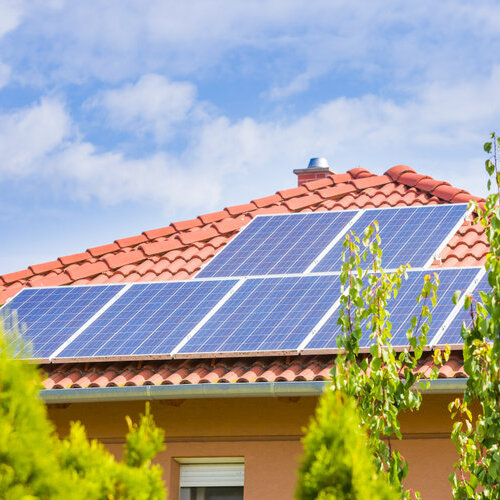
Home Green Home: Creating a Natural Living Space
Originally published in part in Natural Living Today
by Karyn Siegel-Maier
Non-toxic and natural are commonplace words in your vocabulary and form the foundation of your quest for better living. But, while you carefully choose organic foods and fibers to feed and clothe your family, you may have forgotten to regard the construction and furnishing of your home by the same standards. Housebound allergens and toxins can trigger a host of inflammatory diseases, including asthma, bronchitis, migraines and certain skin disorders. Worse yet, their accumulative effects can lead to more serious complications, such as organ disease and cancer. But, the environmental causes aren’t necessarily limited to dust mites, the family dog and Uncle Oscar’s cigar. Chemical toxins reside in abundance in seemingly innocuous places, such as furniture, carpeting and flooring and even in the very walls that make you feel safe.
According to the Environmental Protection Agency (EPA), air in the average American home emits toxin levels up to 70 times greater than outdoor air. A significant reason for this is that construction materials and many different types of home furnishings are laden with chemical preservatives, adhesives and resins that “outgas” and release volatile organic compounds, or VOCs, into your breathing space. But, whether you’re in the process of building a new home, or continuing a long-standing love affair with an older one, there are many ways to ensure that it is as healthy as it can be for the environment and its occupants.
Read the Writing on the Wall
Everyone is familiar with that “new paint smell” that comes from a freshly painted room. But, that tell-tale odor is actually evidence that harmful VOCs originating from mercury, formaldehyde and solvents are at large in the air. And, they remain long after the smell is gone. In fact, VOCs from the application of paint continue to gather on carpeting, upholstery and other surfaces and linger for many years. When exposed to sunlight, they contribute to nearly ten percent of ground-level ozone pollution levels.
How can you color your world without making yourself blue? One simple way is to choose water-based paints over oil-based. Latex paint (water-based) contains 50% less VOCs than oil-based paint and is more resistant to mildew. Many giants in the paint industry, such as Glidden, Benjamin Moore and Sherwin-Williams, now manufacture low-VOC and zero-VOC paints as well. A greener alternative to using latex paint is “milk” paint made from earth pigments, clay, lime and a milk derivative known as casein. Milk paint is sold as a powder to be mixed with water and is available in a wide variety of colors. Although milk paint is enduring (traces of its survival have been discovered in King Tut’s tomb), it is prone to moisture damage and requires a protective sealant.
Lead-based paints have been banned by the Consumer Product Safety Commission from the market since 1978, but if you live in an older home there may be traces of it lurking. Home test kits are available to easily determine the presence of lead in painted surfaces if this is a concern. However, if you should discover the existence of leaded paint in your home, you’re better off covering it with a non-toxic paint or sealant rather than attempting to remove it – the dust from such remediation can cause more problems than the paint itself.
Toxins That Come out of the Woodwork
Wood used in making furniture and cabinetry often contain preservatives that contain arsenic and formaldehyde. The best way to minimize VOC emissions from existing wood furnishings is to coat them with a non-toxic sealant. This, at least, will help to form a barrier between you and the offending chemicals.
If you’re buying new furniture, more effective options are available to you. Look for particle board-containing furniture that is processed with phenol formaldehyde, a less toxic substance than the urea formaldehyde typically used.
The type of wood used in manufacturing furniture is another consideration. Shop with companies that utilize farm grown trees rather than timber from environmentally sensitive areas. Many suppliers are beginning to catch up to the demands of eco-conscious consumers. According to a recent EPA newsbrief, Home Depot has a plan in place that concentrates on supplying wood products specifically not derived from endangered, old-growth forests by the end of 2002.
How you treat unfinished wood is just as important as selecting environmentally friendly wood. Commercial stains and finishes contain harmful resins and solvents that also outgas into the atmosphere. Fortunately, there are a variety of finishes available today – from stains to primers and sealants – for hardwood floors, indoor and outdoor furniture and moldings that are derived from natural pigments, food-grade dyes and citrus oils. Natural stains impart glorious, rich color while keeping the wood “alive” and are available in deep earth tones and in bright hues as well.
That’s Not a Carpet of Grass Under Your Feet
It’s more like a carpet of gas. Commercial carpeting and flooring is made from non-biodegradable synthetic materials that can contain more than 100 carcinogenic agents, including formaldehyde and polyvinyl chloride (PVC). If you already have synthetic carpet or flooring, ventilate your home by opening windows often. You might also want to decorate with natural air filters such as spider plants, pothos and ferns to help absorb these chemicals. Approximately 15-20 such plants will help to detoxify a home of less than 2,000 square feet.
If you’re in the market for new carpeting or flooring, there’s good news. Nature’s Carpet is one company that makes carpeting of natural, untreated wool and employs jute, a hemp product, for backing. Pergo has a line of laminate floors made from compressed wood and paper with low-toxic resins and organic inks. The materials that they use are reclaimable, PVC-free and are never obtained from tropical, virgin forests. Amazingly, other types of natural carpeting and padding are made from recycled 2-liter PET soda bottles.
Are You Making Bedfellows with Toxins?
Synthetic pillows and bedding collect more dust mites, molds, mildews and pet dander than any other material, making them particularly unsuitable for allergy or asthma sufferers. Bedding made from synthetic fiber or foam also outgas formaldehyde and petrochemicals, while feather-filled pillows and comforters can produce an allergic reaction in themselves. Natural, chemical free-wool bedding is resistant to invading allergens and is quite durable, lasting for generations. Unlike down or synthetic fibers, it doesn’t lose it’s shape when washed because each coil-like fiber acts like a spring. Wool is also naturally fire retardant since tests show that its fibers do not ignite or melt easily and it’s ability to create air pockets to retain body heat cannot be duplicated synthetically. Wool bedding is also recyclable (the wool can be recarded and recovered indefinitely), renewable and completely biodegradable.
Cotton is another choice in natural bedding. But, since cotton crops are heavily sprayed with pesticides, you’ll want to make sure your bedding purchases are made of 100% organic cotton. Several eco-wise companies can provide organic cotton sheets, pillows, futons and mattresses stuffed with organic wool and cotton.
If you are currently using synthetic pillows, mattresses and/or comforters, you can reduce your exposure to toxins and allergens by encasing them with slip covers made from organic cotton.
Make Every Breath You Take Cleaner
Does your vacuum cleaner spew more dust than it picks up? Do you have damp areas in your home (such as the laundry room, bathroom or basement) that continuously provide a breeding ground for mold and mildew? Natural ventilation via open doors and windows is one simple way to help keep these problems in check, but filtration is the next step that can help you to breathe even easier.
The most commonly found air filter in use is the High Efficiency Particulate Arresting filter (HEPA). In most air cleaners and vacuums, a fan forces air through a primary filter to first collect large particles and then delivers it to the HEPA filter, where up to 99.97 percent of particles 0.3 microns or larger become trapped. The average size of most airborne particles is 2.4 microns.
Another filter used frequently in hospitals and in high-tech “clean rooms” that is gaining popularity for residential use is the Ultra-Low Penetrating Air filter (ULPA). ULPAs are similar to HEPAs, but they can capture up to 99.99 percent of particles larger than 0.12 microns in size, about 1/960 the diameter of human hair.
Starting From the Ground Up
If you’re building a new home, or adding on to your existing home, there are several exciting and responsible alternatives to using traditional construction materials. According to a recent issue of Builders Environmental News, about 50,000 new homes were framed with recycled steel as opposed to wood in 1997 alone, and this trend is expected to continue. Steel framing offers increased strength and durability and does not require chemical preservation. Steel used in home construction is reclaimable and reduces the amount of endangered timber that often makes its way into home construction.
Remember the story of the Three Little Pigs? One little pig had the right idea when he built his house out of straw. Straw bale construction isn’t a new idea; it was a very popular building method as recent as the early 1950s. But, with the advent of building materials becoming available on a commercial scale, straw bale construction fell to the wayside – until now.
Building with straw bale has numerous benefits over building with wood. For one thing, the straw used is a waste product of cereal grains that is typically burned after the harvest. When baled, this rescued organic material provides better insulation, durability and flexibility and, because of it’s highly compacted state, it is more fire and pest resistant than wood. Straw is also more sustainable in that it can be grown in one season. Building with straw bale usually costs less than wood construction, so homeowners can save a bundle too.
Learn More
Learn more about our green HVAC options in Corona, CA by giving us a call at (951) 268-7170.

